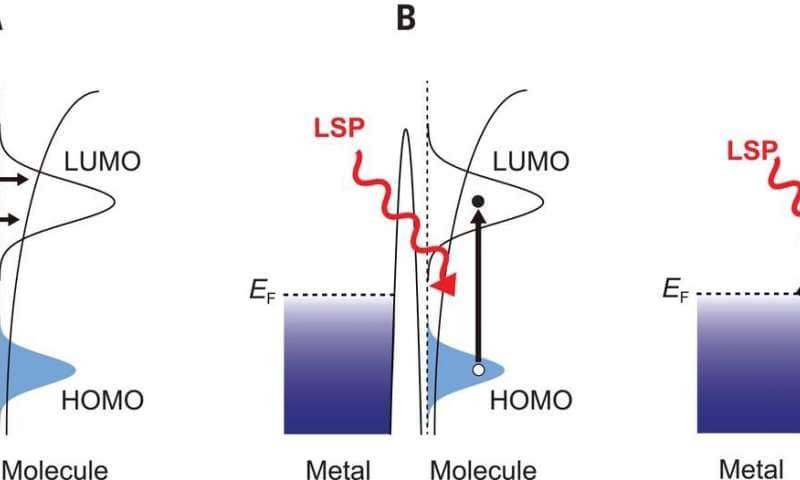
A team of researchers from Japan, Korea and the U.S. has found a way to demonstrate an example of plasmons directly causing changes to a molecule. In their paper published in the journal Science, the group describes their technique and what they learned from it.
Scientists continue to look for ways to make solar energy more efficient, such as photocatalytic devices based on plasmon resonance. Plasmons are, of course, oscillations of electrons near the surface of a material. They are relevant to solar energy applications because they can be triggered by photons. But how this process works is still under investigation. Prior research has suggested plasmon-excited reactions are due to high-energy electrons that are generated as plasmons decay. But in this new effort, the researchers found that it is possible to impact molecules directly using plasmons.
The technique involved using a scanning tunneling microscope to observe a reaction caused by plasmon excitation. They pointed the tip of the microscope’s probe at a single molecule of dimethyl disulfide atop a metal base. The researchers noted that the molecule formed an elliptical protrusion as it sat in a plasmonic field. The team then shone light of different wavelengths on the molecule, which caused changes to the plasmons around it. Those changes, in turn, caused a change in the dimethyl disulfide molecule. It separated into two round protrusions. This, the researchers suggest, occurred because the plasmons had broken the bond holding the components together. They note that their technique is not consistent with the high-energy theory and suggest that the plasmons were actually absorbed by the molecule, which led to weakening the bonds that held it together.
The team has plans to test their technique using other molecules to learn more about which sorts of reactions might occur. Their hope is that, unlike with their example, other reactions will not be constrained by special temperature and pressure requirements. Such conditions are assumed to be necessary for use in manufactured applications.
